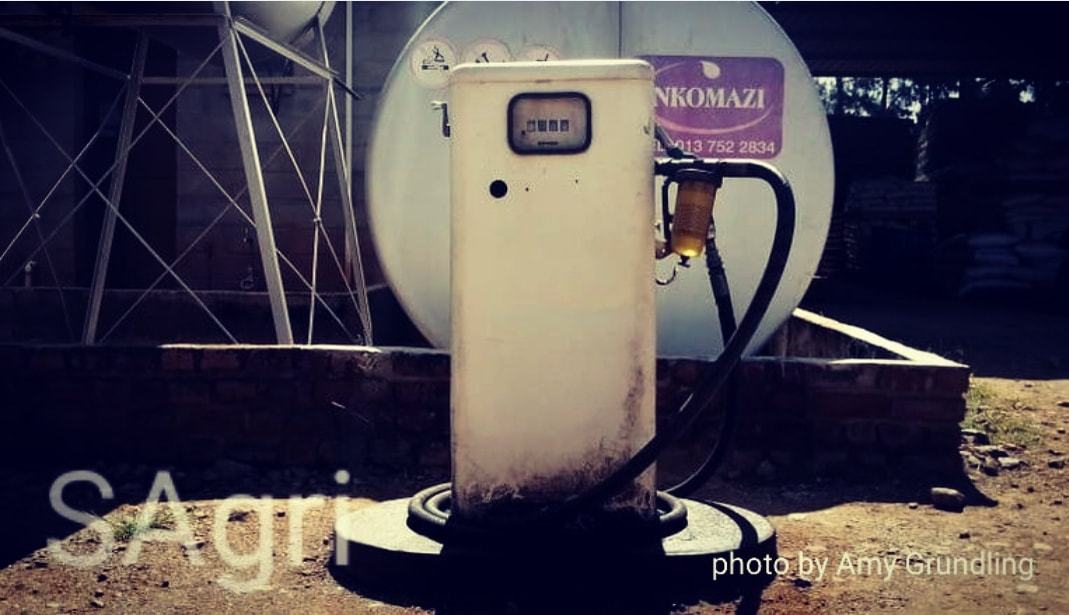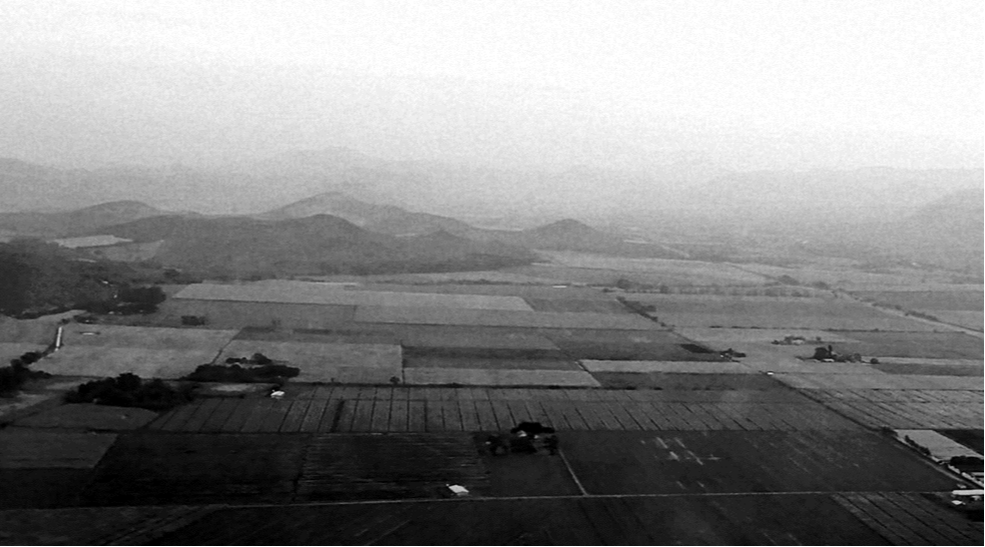|
By Adelene van Zyl Photo by Oliver Eggers, Winterton Food insecurity is becoming a bigger concern as the Covid-19 pandemic spreads across the world. In South Africa, the agricultural sector normally does not contribute a large percentage to the GPD. However, the agricultural sector is currently playing an important role in order to sustain South Africa’s food security during the national lockdown period. The Government has already provided various support measures to the country and its citizens. On 6 April 2020, the Department of Agriculture, Rural Development and Land Reform also acted swiftly in providing support for local farmers. Minister Thoko Didiza announced relief strategies for farmers during the Covid-19 outbreak. The department has made R 1.2 billion available for farmers, focusing mainly on struggling small-scale farmers. This fund is allocated into four main channels. The first channel is the Proactive Land Acquisition Strategy Programme. The second channel focus on the poultry industry, which aims its resources on day old chicks, point of lay chickens, feed, medication and sawdust. The third channel focuses on livestock feed and medication. The last channel focus on vegetable production, aiming the resources on seedlings, fertilizer, pesticides, herbicides and soil correction. The Proactive Land Acquisition Strategy Programme has been allocated R 400 million, while the rest of the fund is allocated to the other three channels. Farmers can apply for support from this fund and will be evaluated on a case by case basis. There are, however, a few criteria that must be met for a farmer to receive financial support. The first criterium is that the farmer must be a South African citizen and must have been farming actively for a minimum of twelve months and must also currently be in the production season. The second requirement is that the farmer must be registered as a farmer or on a commodity or provincial database. Other requirements are that the farmer must be a small-scale farmer must have an annual turnover between R50 000 and R1 million. This process of allocating funds towards farmers will prioritize women, youth and people with disabilities. The department also mentioned exclusions from applying for this fund, such as debt payments, mechanisation, infrastructure and overhead costs. Farmers who are preparing for the summer production of 2020 will also not be supported, since the focus is on relieving current pressure due to the Covid-19 outbreak. Farmers who are already supported through other programmes of government will also not be supported by this fund. Struggling farmers are encouraged to apply for this fund from before 22 April 2020 since no late entries will be accepted. Farmers can find the application forms on www.dalrrd.gov.za and submit the applications electronically to [email protected] or submitted to the offices as stated on the application. Photo of Minister Thoko Didiza (Phakathi, 2020) Minister Thoko Didiza encouraged the farmers with this statement: “I urge all employers within the sector to fully comply with all the acceptable prescripts. Together, as stakeholders within the sector we have a mandate to ensure that there is access to sufficient, safe and nutritious food for our country.”
References Department of Agriculture, Rural Development and Land Reform, 2020. Minister Thoko Didiza announces interventions to assist agricultural sector during Coronavirus COVID-19 lockdown. [Online] Available at: https://www.gov.za/speeches/minister-thoko-didiza-announces-interventions-assist-agricultural-sector-during-coronavirus [Accessed 10 April 2020]. Phakathi, B., 2020. Distressed farmers to get access to R1.2bn government grant. [Online] Available at: https://www.businesslive.co.za/bd/national/2020-04-06-distressed-farmers-to-get-access-to-r12bn-government-grant/ [Accessed 10 April 2020]. By Adelene van Zyl and Renée Grundling Oil has been the most important source of energy in the world since the 1950’s. According to UK Oil and Gas PLC, oil primarily supplies energy to factories, heat homes and produce fuels of all kinds. Modern agriculture is largely automized or semi-automized and is dependent on electricity and fuel to maintain large production machinery and implements.
The conflict between countries regarding oil supply and demand is not a new problem. A result of this conflict led to the creation of the Organization of Petroleum Export Countries (OPEC) in 1960 with its first five members being Iran, Iraq, Kuwait, Saudi Arabia, and Venezuela. [1] A shift came in 1973 when oil was used as a political weapon in the Yom Kippur War. An embargo was set between Israel and the Arab States of Egypt, Syria and Jordan, motivated by the United States of America (USA), to inflate oil prices, effective immediately. This influenced South Africa in 1974 as the first Oil Crisis when oil production slowed down due to oil shortages worldwide, leading South Africa to re-invest in coal derived fuel by companies such as Sasol. In 1979 an Anti-Western policy was set up by Islamic rule in Iran which caused the second Oil Crisis. This led to an eight-year war between Iran and Iraq which caused non-OPEC countries to produce more oil than OPEC countries. In the 1980’s, non-OPEC countries had a 70% market share, upon which the USA increased oil production tremendously. Conflict arose primarily over a waterway between the Persian Gulf and Oman, called Strait of Hormuz, leading to the Arabic Sea. This waterway was and still is the only way of transporting oil to and from the Middle East. In 1991 the USA intervened in the Middle East and established military defence bases and signing defence agreements with the Gulf monarchies. This intervention of peace lasted until 2001 when the USA decided to decrease oil consumption from the Middle East. Conflict between the United States of America and Iran grew further and caused oil prices to spike in 2003. This conflict decreased production and gave China the opportunity to increase oil supply in 2006 and 2007. Steady oil production continued to 2014, until Saudi Arabia manipulated the market in order to prevent the USA from supplying more oil, causing prices to drop. Recent conflicts between the USA and Iran stems from political skirmishes involving nuclear device productions, deals and sanctions, all of which leads to rumours regarding warfare between these two countries and fluctuating oil prices. [2] How might this influence South Africa? Due to the instability of geo-politics and variables regarding oil supply and demand, it is difficult to determine exactly what will happen and how it might influence South Africa. Currently, South Africa is mainly dependent on coal produced energy and amounts to 59% of the country’s energy consumption. Crude oil and gas only amount to 16% and 3% respectively. The main concern for South African electricity is not oil fluctuations, but rather excessive coal consumption due to this resource being depleted at an increasing rate.[3] South Africa’s fuel prices, however, is very much dependant on the Rand/US Dollar exchange rate and international crude oil prices. South Africa should therefore turn its focus to biogas and biofuels. These are renewable energy sources that is produced by anaerobic digestion of organic materials and used in the agricultural sector, minimizing costs of the farmer by substituting natural gas. Biogas has added benefits such as reducing exhaust emission pollution and one’s carbon footprint [4] . Biofuel is a product of biogas when CO 2 is removed to increase the energy content and allow storage under high pressure [6] . Biofuel can be biodiesel or bioethanol, both of which is made from different biomass and has different products and implements in which it can be used. Bioethanol is a biofuel that can be used in engines that run on petrol and is made from fermented sugar. [5] This type of biofuel is commonly produced using agricultural wastes such as corn straw and sugarcane bagasse.[6] Biodiesel, as the name implies, is a diesel substitute and is produced using a process called “transesterification”. This type of fuel is produced from various fats and oils from feedstocks such as canola and soybean. [6] Farmers can therefore literally grow the fuel for their farm machinery and implements [6] . Biogas and biofuels will most likely become a reality much sooner than what we may think. Transitions from electricity and fossil fuels to natural gas and biogas will enable the user to slowly become independent from energy and crude oil providers such as Eskom and imports from the Middle East. The agricultural sector, as an added benefit, will not only be able to use their home-grown fuel, but can also create a lucrative income for themselves. References [ 1 ] Meredith, S., 2020. Energy infrastructure attacks are ‘probable’: Oil traders fear supply disruptions in the Middle East. [Online] Available at: https://www.cnbc.com/2020/01/07/us-iran-tensions-oil-traders-fear-supply- disruptions-in-middle-east.html [Accessed 3 Febuary 2020]. [ 2 ] Parvaneh, D., 2019. Why The US And Iran Are Fighting Over This Tiny Waterway. [Online] Available at: https://www.vox.com/videos/2019/8/22/20828858/us-iran-hormuz-oil-tanker [Accessed 1 Febuary 2020]. [ 3 ]Ratshomo, K., 2018. South African Energy Report, Pretoria: Department of Energy. [ 4 ] Farm Energy, 2019. Introduction to Biodiesel. [Online] Available at: https://farm-energy.extension.org/introduction-to-biodiesel/ [Accessed 1 Febuary 2020]. [ 5 ] Farm Energy, 2019. Warm Climate Feedstocks for Biodiesel. [Online] Available at: https://farm-energy.extension.org/warm-climate-feedstocks-for-biodiesel/ [Accessed 1 Febuary 2020]. [ 6 ] Sarkar, N., Ghosh, S.K., Bannerjee, S. and Aikat, K., 2012. Bioethanol production from agricultural wastes: an overview. Renewable energy, 37(1), pp.19-27. By Amy Grundling Market intervention schemes providing support to farmers were implemented internationally for decades. State support grew stronger in the 1930’s with the aim to mitigate the negative effect of the economical great depression. The interventions were enabled by the Marketing Act which was one of the most controversial pieces of economic legislation in the history of South African agriculture. It was first enacted in 1937 (Act 27 of 1937) and amended in 1968. During the late 1990’s South Africa went through radical political and economical reform. The Marketing Act of 1968 did not comply to the new social, political and economical needs of the new democratic South Africa. The new Marketing of Agricultural Products Act, Act 47 of 1996 was therefore developed. The Marketing of Agricultural Products Act of 1996 (MAP), which replaced the Agricultural Marketing Act of 1968, liberalized the South African agriculture sector. The Agricultural Marketing Act of 1968 gave the government total control over the domestic and trade market. Partial reforms accrued during the 1980's and early 1990's, but it was only in 1994-97 when radical reform took place after South Africa’s firs democratic elections. Before the radical reform took place in the agricultural sector, the Marketing Act (1968) enabled the Minster of Agriculture to promulgate marketing schemes which was administered by control boards. The control boards had varies power such as: implementing fixed prices, marketing quotas, fixed transport tariffs, levies on products, registering produces, traders and processors and legally being the sole buyer or seller. These controlled agricultural schemes created problems in South Africa’s economy and food security. Examples of these problems were the limited market access of previously disadvantaged people, the negative impact on other sectors such as the transport industry, the increase of input cost, destroying surplus yields to control prices and eliminating competitive pressure. These market limitations caused the South African agricultural sector to lose their competitive advantage. Therefore, it was not only the domestic market that was negatively influenced but also the export market. These were the driving forces for the radical reform that took place in 1994. The new Marketing of Agricultural Products Act (1996) reduced state intervention in marketing and product prices in the agricultural sector. The new Act abolished all the schemes of the 1968 Act and appointed the National Agriculture Marketing Council (NAMC) in the place of the control boards. The role of the NAMC is to advise the Minister of Agriculture in the decision-making process. The first council comprised of 10 members was established on 6 January 1997. The liberalization of the agriculture sector created a free market system that is driven by supply and demand to dictate the market prices. The Uruguay Round Agreement of Agriculture (URAA), required the South African government to decrease government support. The aim of the URAA was to enable World Trade Organization (WTO) members to trade without causing fluctuations in market prices and failure of export earnings. Through the MAP Act direct controls over imports were replaced by tariffs, which were set according to the bound rated of the URAA and eliminating government control over exports. The withdrawal of support from the commercial farmers pressured the agricultural sector, while deregulation of input and services. According to the Organisation for Economic Coperation and Development (OECD) report, which was published in 2006, this effected the large changes in the market, which included:
However, the limited state support agreed in the URAA and MAP Act creates an unequal playing field due to WTO countries that do to follow the agreement. Today, many of the WTO countries’ farmers still receives subsidies from their governments. This causes an unequal playing field between these countries. For example, European farmers are paid per liter milk and conservation subsidies by the European Union. This caused them to sell their products at a lower market price as the South African farmers. These agreements make it more difficult to obtain protection against unfair trade practices. The South African government needs to re-evaluate the position of our agricultural sector. It is important for government support in a free market system to ensure that trade agreements and policies benefit South Africa’s agricultural sector and not limiting it. |





